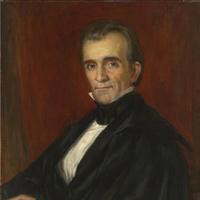More about Max Westfeld
Works by Max Westfeld

Contributor
Max Yisroel Westfield added an i to his last name when he arrived in the United States, about a year after the outbreak of World War II.
Like many immigrants, he figured that his birth name, Westfeld, would sound too foreign for his new English-speaking neighbors, and he didn't particularly want to be stuck out in left field with a German name in wartime. For Westfield and his family, the United States was a field of dreams, a place for refuge and simple living. Westfield grew marigolds in his backyard for his still life paintings. We could dwell endlessly on the enormous loss of life during WWII, and that occurred the night the German government destroyed Westfield's apartment in Dusseldorf. And mourning is an important part of Westfield's ancestral Judaism. But so is humor, and picking up and moving on, and making the world a place of peace and sacred joy, like Westfield and his family did.
One of the greatest things about Sartle is the opportunity to put on my double-billed Sherlock Holmes hat and investigate artists who have almost slipped out of the historical record. Westfield, despite his work's placement in the Smithsonian National Portrait Gallery, is very much under the English-language, and even German-language, art historical radar, partly because his life extends only to the very, very beginnings of the internet, and also because of an inconvenient incident which we call World War II. For this reason, we have to rely on unconventional sources, like—gasp!—a Facebook fan page, for information on Westfield. Westfield was born on April 12th, 1882 to Kaufmanns Michaelis Westfeld and Jenny Seckel. The name Seckel or seichel means intelligence in Hebrew, so maybe that's where Westfeld got his considerable smarts. The family made their home in Herford, Germany, in Westphalia, where Jews have lived for six centuries. According to Geni.com, Westfield had three brothers and two sisters, one of whom, Walter, was an art dealer who never escaped the fascists. Walter Westfield gave the money he made selling art to his siblings to help them escape the war. The government framed him on art smuggling charges, imprisoned him for two and a half years, and sent him to the camps.
I could write a whole 'nother story on the Westfield work heroically preserved and "curated" on Facebook by the administrator of a page called "The Art of Max Westfield." The administrator says that Westfield's best work may be a portrait of an elderly man, possibly Westfield's grandfather, from around the artist's thirtieth birthday. You can see, in that work, that he's already found his voice. In his later years, he was quite prolific in still lifes. His most famous work is a life portrait of Albert Einstein, during the painting of which, the Smithsonian relates, Einstein said to Westfield, "After fifty years they will say of me, either he was a great man or a fool!"
Three years before World War II began, the German fascist government banned Westfeld from painting, in order to prevent the success of Jews in what they saw as an international conspiracy involving the U.S. which caused Germany's humiliating defeat in WWI and subsequent disarmament. The rearmament and hateful fervor which festered and metastasized in Germany is well documented. Two years later, during the November pogrom, the government still had it in for Westfeld, and they raided and destroyed his Düsseldorf apartment. We don't often think of prison as a lifesaver, but, in this case, Westfeld survived because he was imprisoned during the pogrom for speaking out against the government.
Two years later, Westfield made it to the U.S., settling in Nashville. He had made a good name for himself in Germany, as an alum of the Kunstakademie Düsseldorf, where Gerhard Richter later taught. His brother, Dietrich, had been a high-ranking judge, but they both learned when they arrived that their skills weren't transferrable. For a while, both brothers had to sell cola at May's Hosiery Mill to make ends meet. But with his spirit of perseverance, Max Westfield rebuilt his career. His granddaughter, Joan Kahn, is also an artist.
Sources
- Dorman, Lee. Nashville's Jewish Community. San Francisco: Arcadia Publishing, 2010.
- Eintrag im Adressbuch der Stadt Düsseldorf 1938. Schwann, Düsseldorf, S. 184.
- "Elderly man." Facebook, Jun. 14, 2015, https://m.facebook.com/TheartofMaxWestfield/photos/a.1605050963100929/1….
- "Herford 262 Inschriften (~1679-2013)." Steinheim Institut, http://www.steinheim-institut.de:50580/cgi-bin/epidat?id=her-210&lang=de.
- "In the Face of Destruction." Vanderbilt Magazine, Mar. 11, 2008, https://news.vanderbilt.edu/vanderbiltmagazine/in_the_face_of_destructi….
- "Max Westfield (Westfeld)." Geni.com, May 24, 2018, https://www.geni.com/people/Max-Westfield/6000000042262044899.
- "Portrait of Albert Einstein by Max Westfield." NPG, https://npg.si.edu/blog/portrait-albert-einstein-max-westfield.
- "Roses." Facebook, https://m.facebook.com/TheartofMaxWestfield/photos/a.1605050963100929/1….
- Sigal, Elazar. Max Westfield: A German Jewish Artist of Nashville. Self-published, 5773-74/2013.
- Wawrzyn, Heidemarie. "Herford." German Synagogues, http://germansynagogues.com/index.php/synagogues-and-communities?pid=63….










